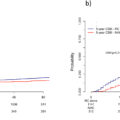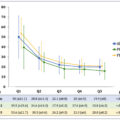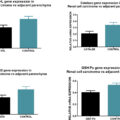Highlights
- •
A review of malpractice cases involving testicular cancer patients was performed.
- •
About 24 malpractice cases were identified, the majority of which were related to delayed diagnosis.
- •
No malpractice litigation was found related to surveillance or surgical practices.
Abstract
Objective
Medical and surgical advancements have been made in testicular cancer management over the past 50 years. The evolution of practice standards is expected to provide patients benefits in quality of life and oncologic outcomes, but changes in care standards can introduce potential opportunities for increased malpractice claims against providers. We seek to evaluate if modifications in testicular cancer management have translated to a rise in malpractice lawsuits.
Methods
A retrospective review of testicular cancer malpractice cases within the Google Scholar Case Law database was performed from January 1, 1975, to January 1, 2024.
Results
Of 102 cases initially screened, 24 were identified after duplicates were excluded and cases irrelevant to malpractice litigation in testicular cancer patients. Most cases were related to delays in diagnosis or treatment ( n = 21, 87.5%). Two cases (8.3%) were in response to complications from radiation treatment, and 1 case (4.2%) was a suit in response to the loss of semen specimen for fertility preservation after testicular cancer diagnosis. No malpractice claims were filed in response to surveillance practices or surgical techniques utilized for retroperitoneal lymph node dissection.
Conclusions
Despite the adoption of changes in testicular cancer management and ongoing controversies in care, an increase in malpractice lawsuits in response to changing paradigms in testicular cancer was not seen.
1
Introduction
Testicular cancer is unique in genitourinary cancers in that it is diagnosed commonly in young, otherwise healthy men. With a 5-year relative survival rate of over 95% and a low recurrence rate for early-stage tumors, the goals of oncologic care remain shared in providing both curative treatment and limiting sequelae of interventions [ ]. Guidelines for the management of testicular cancer have undergone changes in the past 50 years, reflecting advancements in our understanding of the disease process and a collective desire to reduce morbidity associated with treating the disease. This has translated to optimization of adjuvant chemotherapeutic regimens [ , ]. Furthermore, since the early 2000s, there has been a transition to surveillance as the preferred management option in Stage I seminoma and nonseminoma disease after orchiectomy [ ]. With regard to advancements in surgical management, nerve-sparing, and modified templates have become accepted standards when oncologically feasible for retroperitoneal lymph node dissections (RPLND) [ ]. Although minimizing the invasiveness of RPLND with robotics has also been evaluated, it remains controversial and should only be considered at high-volume centers [ ]. The evolution of practice standards is intended to benefit patient care, but with the transition of care guidelines, the potential for malpractice allegations can be introduced.
Annually, 7% of physicians will be involved in a malpractice suit, with close to 2% having a claim requiring payment for damage or loss [ ]. Surgical specialties tend to be more highly represented in malpractice claims filed and have a higher proportion of claims resulting in payment [ ]. A survey of 110 urologists in the United States in 1996 revealed 77% had been involved in a malpractice claim during their surgical career [ ]. Historically, urolithiasis has been the most common urologic condition, leading to litigation involving urology practices [ ]. However, with the acceptance of surgical advancements and the drive towards surveillance as a management option across numerous cancer types, it is unclear how malpractice risk has changed for urologic oncologists. Chang et al. [ ] recently revealed that there has been no successful malpractice litigation involving active surveillance practices in a variety of cancers, although testicular cancer was not evaluated. It remains unknown how malpractice cases particularly in the management of testicular cancer patients have evolved.
In this context, we seek to evaluate the frequency and causation of malpractice claims as well as temporal trends in testicular cancer management. We hypothesize that changing paradigms of care in testicular cancer treatment could lead to an increased risk of malpractice allegations.
2
Methods
The Google Scholar Case Law database, an open access database of state and federal case law as well as trial court cases, was evaluated for litigation related to testicular cancer malpractice in the United States. A query of the following terms from January 1, 1975, to January 1, 2024, was completed: “testicular cancer” OR “testis cancer” AND “malpractice.”
The search revealed 102 related lawsuits. Cases were screened to eliminate duplicate reported cases ( n = 19). Cases were reviewed and confirmed to directly involve a plaintiff alleging the defendant of medical malpractice. Medical malpractice is legally defined as a provider having a duty to the patient that was breached and resulted in injury and damages [ ]. Cases not immediately relevant to malpractice in testicular cancer diagnosis or management were excluded ( n = 56). Three cases were excluded as they were related to allegations of toxic exposures causing potential risk and/or development of testicular cancer. Ultimately, 24 cases alleging malpractice met inclusion criteria ( Fig. 1 ).

3
Results
Of 102 cases initially screened, 24 cases were identified after the exclusion of duplicates and cases found to be irrelevant to malpractice litigation in testicular cancer patients. Fifteen different states were involved in malpractice cases involving testicular cancer patients ( Table 1 ). New York state had the highest number of cases filed ( n = 5), followed by California ( n = 3), and Pennsylvania ( n = 3). Fig. 2 represents the temporal trends of lawsuits over the period of analysis. The year 2022 had the highest number of cases at 3, but an increasing trend in cases filed per year was not seen.
| Case: | Year: | State | Case Summary: |
|---|---|---|---|
| 1. | 1975 | LA | Delayed diagnosis: Plaintiff filed malpractice lawsuit for delayed diagnosis leading to metastatic testicular cancer. Plaintiff ultimately passed and family continued the claim. |
| 2. | 1985 | MO | Delayed diagnosis : Wrongful death action brought by family for failure to diagnose patient’s testicular cancer. |
| 3. | 1985 | GA | Complication of treatment from radiation : Plaintiff alleged fraudulent concealment of radiation side effects of testicular cancer treatment. |
| 4. | 1987 | TX | Complication of treatment from radiation : Plaintiff alleged negligence in performing radiation for testicular cancer as he later suffered from radiation side effects. |
| 5. | 1992 | NJ | Delayed diagnosis: Medical malpractice action brought against 2 urologists by the widow of one of their patients for delayed diagnosis of metastatic testicular cancer. |
| 6. | 1993 | CA | Delayed treatment: Wrongful death suit against insurance company for withdrawing approval for treatment for plaintiff’s testicular cancer, which delayed treatment. |
| 7. | 1995 | DE | Delayed diagnosis: Plaintiff alleged medical center failed to diagnosis metastatic testicular cancer despite numerous physicians evaluating him. |
| 8. | 1996 | NY | Delayed diagnosis: Plaintiff alleged negligence and medical malpractice against the State of New York for delayed diagnosis of metastatic testicular cancer. |
| 9. | 2000 | AL | Delayed diagnosis : Plaintiff applying for a rehearing concerning his deceased son’s lawsuit against multiple physicians for failure to diagnose testicular cancer after numerous presentations. |
| 10. | 2002 | MS | Delayed treatment : Wrongful death lawsuit by decedent’s mother as decedent passed away from testicular cancer while in state custody. |
| 11. | 2002 | NY | Delayed diagnosis : Plaintiff claimed delayed diagnosis of testicular cancer by primary care physician after initial presentation with testicular pain. |
| 12. | 2011 | NY | Delayed diagnosis: Medical malpractice claim in which an imprisoned individual alleged a physician did not do any further testing or treatment, leading to a delay of testicular cancer diagnosis. |
| 13. | 2011 | PA | Delayed diagnosis : An inmate of a correctional facility claimed deliberate indifference to medical needs and violation of the Eighth Amendment of the constitution with removal of this testicle upon diagnosis of testicular cancer. |
| 14. | 2012 | OR | Delayed diagnosis : Claims case alleging malpractice and wrongful death in the treatment of the plaintiff who developed testicular cancer and ultimately passed away from the disease. |
| 15. | 2013 | NY | Delayed diagnosis: Medical malpractice suit concerning a delay in diagnosis of testicular cancer surrounding the plaintiff’s evaluation. |
| 16. | 2014 | IL | Other – Loss of semen for fertility preservation after diagnosis of testicular cancer . Complaints filed by multiple individuals including some who asserted that they underwent cryogenic preservation of sperm due to a diagnosis of testicular cancer. These samples were lost due to a failure of a cryogenic tank. |
| 17. | 2014 | PA | Delayed diagnosis : Action filed alleging civil rights violations and medical malpractice on the part of state correctional officials and prisoner health care providers. Plaintiff passed away from testicular cancer 4 months after filing the suit. |
| 18. | 2015 | MS | Delayed diagnosis : Plaintiff within a correctional facility claimed he was denied and delayed receiving care for testicular cancer. |
| 19. | 2016 | CA | Delayed diagnosis : Plaintiff claimed primary care provider delayed testicular cancer diagnosis leading to delayed diagnosis of metastatic disease. |
| 20. | 2020 | NY | Delayed diagnosis : Plaintiff alleged negligence and failure to adhere to standards of care of his pediatrician leading to a delayed diagnosis of testicular cancer. |
| 21. | 2021 | OH | Delayed diagnosis : Civil suit claiming medical negligence and deliberate indifference towards the medical needs of an inmate who was eventually diagnosed with testicular cancer. |
| 22. | 2022 | CA | Delayed diagnosis: Suit filed alleging indifference towards serious medical needs as well as medical negligence and malpractice on the part of prison health care providers in failing to diagnose testicular cancer. |
| 23. | 2022 | PA | Delayed diagnosis: A prisoner within a federal detention center alleged delayed diagnosis of testicular cancer while in custody. |
| 24. | 2022 | AZ | Delayed diagnosis : Class action suit filed on the part of prisoners of a correctional system alleging violations of constitutional rights including medical rights. One member claiming delayed diagnosis of testicular cancer. |
Stay updated, free articles. Join our Telegram channel

Full access? Get Clinical Tree








